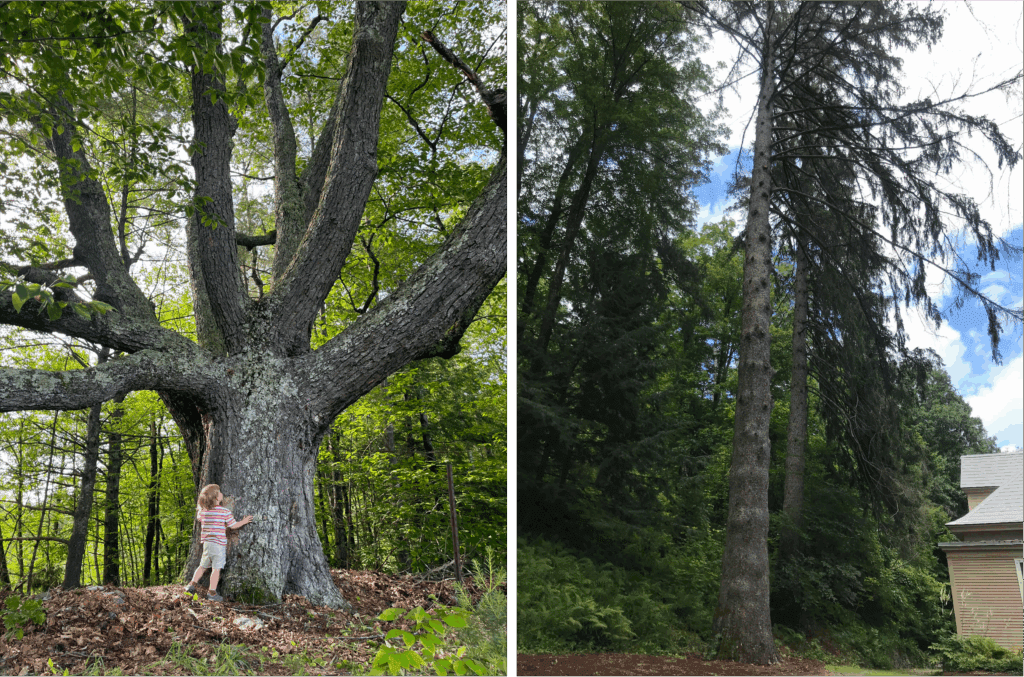The Vermont Big Tree Program, operated by the Vermont Urban and Community Forestry Program, has identified the five tallest trees in Vermont, and two of them reside in our area — a 120-foot-tall Norway spruce located at the entrance of the Marsh-Billings-Rockefeller National Historical Park (MBRNHP) in Woodstock and a 73-foot-tall black birch tree located on the Pohl Property in Hartland. Together, these trees are a part of a deeper story, spanning decades, as they have grown to reach new heights.
The 73-foot-tall black birch tree is extremely rare, according to Jason Berard, vice president of the Upper Valley Land Trust. “It is a stunning tree and does not look like a typical black birch; we suspect that it is because of its age. As birch trees grow, their characteristics change. The bark on this tree is rather atypical, mainly because we don’t see black birch trees as large and possibly as old as this one,” said Bernard
Gwen Kozlowski, Outreach & Education Coordinator for the Vermont Urban and Community Forestry Program, is responsible for taking the measurements of these trees. She measured this black birch tree to have a height of 73 feet, a crown spread (the horizontal distance across the widest part of the tree’s crown, measured from branch tip to branch tip) of 78 feet at its narrowest and 89 feet at its widest. She also measured a 172-inch circumference and calculated this tree to score “265.8 big tree points.” Big tree points is a metric used by the Vermont Big Tree Program, determined through a calculation of circumference (inches) + height (feet) + crown spread (feet). This is how they gauge which trees are the tallest and most noteworthy.

At left, Ira Henderson hugs the national champion black birch tree, which stands at 73 feet tall, at the Pohl conservation area in Hartland. Holly Henderson Photo
At right, this 120-foot-tall Norway spruce tree is located at the Marsh-Billings-Rockefeller National Historical Park in Woodstock. Gwen Kozlowski Photo
Berard concluded, “We credit this growth to a long history of good land stewardship. The people of Hartland care for their land; it shows in the care and maintenance of these trees.”
When discussing the Woodstock Norway spruce, Kozlowski could not help but dive into the rich history of the MBRNHP land and how conservation efforts have allowed for this tree to grow to an astounding 120 feet. She said, “The Norway spruce, while not native to North America, has a significant place in the history of the MBRNHP. Its history at the park is tied to the legacy of conservation and land stewardship, championed by figures like George Perkins Marsh, Frederick Billings, and the Rockefeller family.”
The tree stands at 120 feet, with a circumference of 154 inches, and a crown spread of 38 feet, giving it a total of 283.7 big tree points.
The Vermont Big Tree Program and Vermont Urban and Community Forestry Program at large encourage all local residents to head out to the Pohl and MBRNHP properties to see these extraordinary trees while they are still standing.
For more on this, please see our July 17 edition of the Vermont Standard.